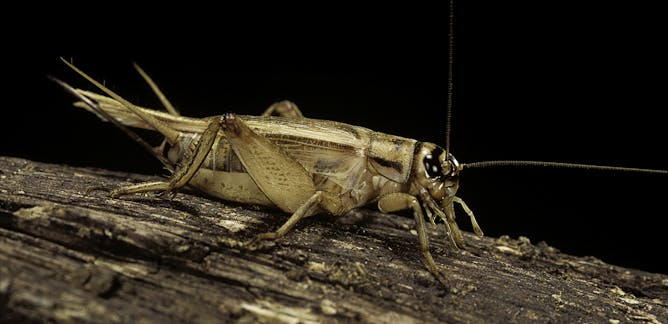|
You may have heard how rates of myopia, or not being able to focus on objects far away, have been on the rise for years. For children who spend much more time in front of screens than previous generations, it’s easy to blame technology for the problem. But Andrew Herbert, a vision scientist from Rochester Institute of Technology, says the explanation is not as simple as that.
Indeed, recent studies “provide strong support for the idea that an important driver of the uptick in myopia is that people are spending more time focusing on objects immediately in front of our eyes, whether a screen, a book or a drawing pad,” Herbert writes. Research also shows that children who don’t spend much time outdoors have higher rates of myopia as well.
The good news is that there are ways to address myopia: spending less time focusing on objects close to your face and spending more time outside in bright, natural daylight. Frequent breaks away from “near work” can help as well, he writes.
Also in this week’s science news:
If there’s a subject you’d like our team of science editors to investigate, please reply to this email.
|

Nearsightedness is also known as myopia.
Witthaya Prasongsin/Moment via Getty Images
Andrew Herbert, Rochester Institute of Technology
While reading, scrolling and focusing on other objects near our faces increase the risk of developing myopia, a little time outdoors in the sun can help mitigate it.
|

The relatively new discipline of epigenetics explores how diet and nutrition can affect not only our own health but that of future generations.
Drazen Zigic/iStock via Getty Images Plus
Nathaniel Johnson, University of North Dakota; Hasan Khatib, University of Wisconsin-Madison; Thomas D. Crenshaw, University of Wisconsin-Madison
Studies show a parent’s poor diet could affect the genes of generations to come – and set up children and grandchildren for obesity and cardiovascular issues.
|

Wild turkeys in a yard on Staten Island, N.Y.
AP Photo/Kathy Willens
Marcus Lashley, University of Florida; William Gulsby, Auburn University
Wild turkeys were overhunted across the US through the early 1900s, but made a strong comeback. Now, though, numbers are declining again. Two ecologists parse the evidence and offer an explanation.
|
|
|

Ty Schepis, Texas State University
THC concentrations in newly available products far exceed those of traditional smoked weed, which can have dangerous unintended consequences in adolescents.
| |

Ian Myles, National Institute of Allergy and Infectious Diseases
From synthetic fabrics to car exhaust to wildfires, exposure to environmental pollutants push the skin microbiome to adapt in ways that reduce its ability to protect the skin.
|

Jordi Calvet-Bademunt, Vanderbilt University; Jacob Mchangama, Vanderbilt University
AI chatbot makers’ restrictive use policies hinder people’s access to information.
| |

Floyd W. Shockley, Smithsonian Institution
Only male crickets have wing structures that produce sound, but females are very good at following the signal.
|
|
|
|
|
-
Michael F. Gorman, University of Dayton
Nobody wants to see an accident involving flammable, corrosive or radioactive material. But understanding the rules put in place to prevent these accidents isn’t easy.
-
Emily Benton Hite, Saint Louis University; Denielle Perry, Northern Arizona University
The Federal Energy Regulatory Commission recently ruled that it won’t approve energy projects on Native lands without tribal consent. But many more applications are pending.
-
Beth Ann Malow, Vanderbilt University; Susan Nehiley Brasher, Emory University; Terry Katz, University of Colorado Anschutz Medical Campus
Sleep habits can be improved by making shifts in both daytime and evening routines.
-
Nao Hagiwara, University of Virginia; Tiffany Green, University of Wisconsin-Madison
Many Black patients experience stark differences in how they’re treated during medical interactions compared to white patients.
|
|